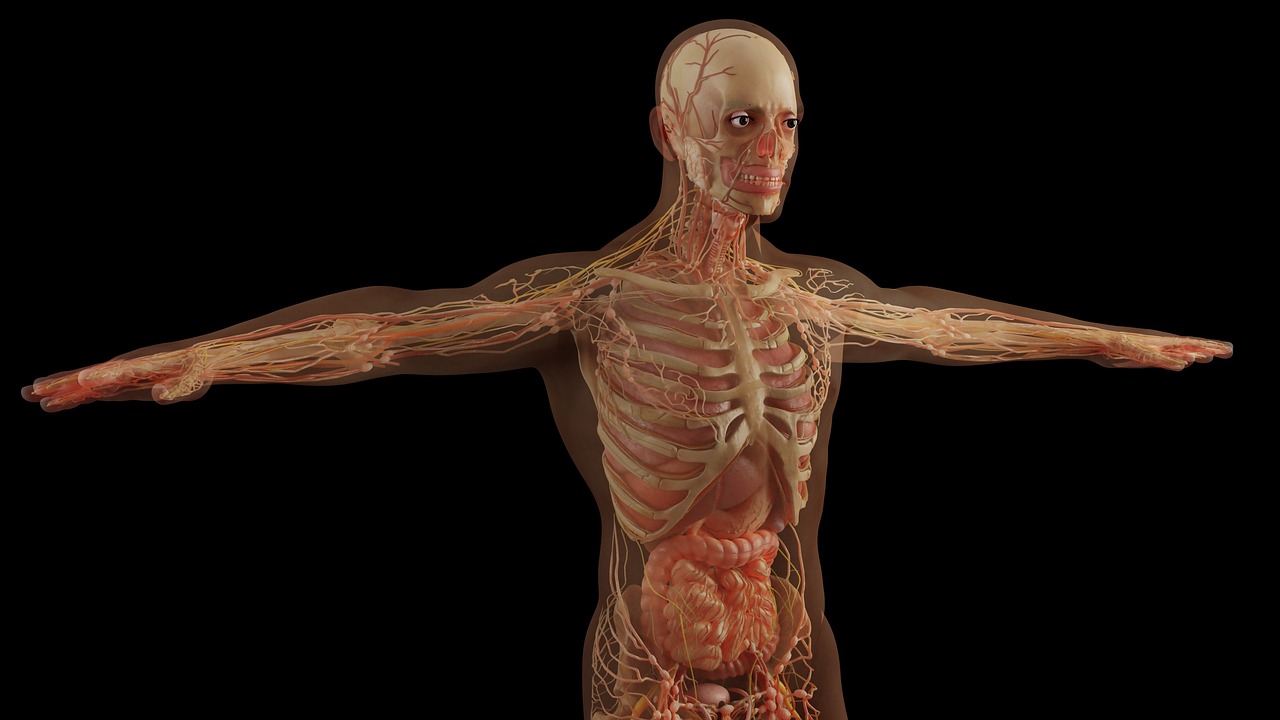Fullerenes are a modern ingredient in dietary supplements that support health and well-being. Thanks to their powerful antioxidant and adaptogenic properties, they protect cells from oxidative stress and help combat the aging process.
Biological fullerenes represent a mixture of natural forms of activated carbon, containing nanometric, spherical structures resembling fullerenes, as well as loose aggregates composed of carbon particles. The AURONN® formulation additionally contains silica and over 30 natural trace elements essential for proper cellular metabolism. Its structure translates into high electron-donating activity, which is key to the antioxidant potential of the biological fullerene preparation (AURONN®). Importantly, each fullerene-like structure exhibits antioxidant properties.AURONN® is based on activated carbon with such properties and is compliant with the requirements of the FDA, EFSA, and GIS, as it does not contain synthetic fullerenes C₆₀ but is based on a natural element — carbon — in a system enriched with selected trace elements. Fullerene is a very good chemical form of carbon, so it is not included on banned or restricted substance lists such as those applying to synthetic fullerene C₆₀-based preparations in Europe.
Unlike synthetic fullerenes, whose use is limited due to the lack of a clearly defined safety profile, biological fullerenes are gaining importance as not only effective but also legally compliant raw materials within the European Union.
The trace element blend included in AURONN® not only improves bioavailability but may also support ionic homeostasis in cells, including those in the skin. The effects observed in in vitro studies and pilot applications suggest that this formulation may serve as an alternative to traditional antioxidants used in aesthetic cosmetology, such as vitamin C or coenzyme Q10.
Unlike synthetic fullerenes, whose use is limited due to the lack of a clearly defined safety profile, biological fullerenes are gaining importance as not only effective but also legally compliant raw materials within the European Union.
The trace element blend included in AURONN® not only improves bioavailability but may also support ionic homeostasis in cells, including those in the skin. The effects observed in in vitro studies and pilot applications suggest that this formulation may serve as an alternative to traditional antioxidants used in aesthetic cosmetology, such as vitamin C or coenzyme Q10.

Carbon is one of the most fundamental chemical elements, forming the basis of life on Earth. Known for its exceptional ability to form diverse structures, carbon can exist in many forms, such as diamond, graphite, graphene, or fullerenes.
What these forms have in common is carbon — an element whose structural flexibility plays a key role in the formation of the universe and the functioning of living organisms.
Carbon is not only the foundation of life but also an essential component in many technologies of the future.
Fullerenes, a form of carbon, are a modern and innovative solution in the field of dietary supplements, supporting health and overall well-being.
Thanks to their unique antioxidant and adaptogenic properties, fullerenes may help protect cells from oxidative damage, aiding in the fight against aging and various diseases.


FULLERENE C60, commonly known as C60, is considered one of the most groundbreaking discoveries of the late 20th century and was awarded the Nobel Prize in Chemistry in 1996.
A molecule of carbon C60 consists of 60 carbon atoms arranged in a unique structure resembling a soccer ball, composed of 20 hexagons and 12 pentagons. This characteristic shape gives Carbon 60 its remarkable properties, including resistance to radiation.
Fullerenes are known as powerful neutralizers of harmful free radicals—antioxidants.
They have the ability to locate free radicals and bind with them in the body by donating or sharing electrons. Once harmful free radicals are neutralized, they no longer affect their surroundings, allowing the body to begin its natural repair processes.
Due to carbon's strong affinity and its essential role in biology, fullerene C60 is hundreds of times stronger than typical free radical neutralizers.
A free radical is a damaged molecule missing an electron, making it dangerous to the body. Major sources of free radicals include processed foods, harmful chemicals, pollution, some pharmaceuticals, metabolic processes, intense physical exercise, and UV radiation.
Free radicals can destroy various parts of cells, such as proteins, DNA, and cell membranes, by stealing their electrons in a process called oxidation. The accumulation of such damage often leads to cell death. Numerous studies show that damaged free radicals may contribute to hair loss, skin diseases, joint inflammation, fatigue, stress, DNA damage, cancer, and aging.
Using fullerenes effectively neutralizes free radicals, which accelerate aging. Thanks to their strong antioxidant properties, fullerenes protect cells from oxidative damage, support tissue regeneration, reduce the appearance of wrinkles, and improve skin elasticity. The result is a slowed aging process and improved overall health and skin appearance.
Carbon is one of the main elements in the human body, along with oxygen, hydrogen, nitrogen, calcium, and phosphorus. The exact carbon content in the human body is about 18.5% of total body mass. Carbon is a key structural element present in every cell and plays a role in the formation of proteins, fats, DNA, and other important chemical compounds.


Carbon is essential for the proper functioning of the body because it forms stable bonds with other elements, enabling the formation of complex organic molecules. These molecules are the foundation of biochemical processes that sustain life, from metabolism and DNA replication to intercellular communication.
Dym tytoniowy jest bogaty w wolne rodniki i substancje chemiczne, które je generują. Każda inhalacja dymu papierosowego wprowadza do organizmu tysiące wolnych rodników, które uszkadzają komórki i tkanki. Palenie papierosów jest silnie powiązane ze stresem oksydacyjnym, co przyczynia się do rozwoju wielu chorób przewlekłych.
Dieta bogata w tłuszcze nasycone i uboga w antyoksydanty sprzyja powstawaniu wolnych rodników. Nadmierne spożycie tłuszczów nasyconych może prowadzić do peroksydacji lipidów, co generuje wolne rodniki. Brak antyoksydantów w diecie uniemożliwia neutralizację tych wolnych rodników, co prowadzi do stresu oksydacyjnego.
Promieniowanie ultrafioletowe powoduje powstawanie wolnych rodników w skórze, prowadząc do uszkodzeń komórkowych. Promieniowanie UVB i UVA indukuje produkcję reaktywnych form tlenu ROS, które uszkadzają DNA, białka i lipidy w komórkach skóry. To prowadzi do fotostarzenia, mutacji i zwiększa ryzyko nowotworów skóry.
Promieniowanie jonizujące, takie jak promieniowanie rentgenowskie i gamma, może indukować produkcję wolnych rodników w tkankach. Te formy promieniowania mogą powodować rozpad cząsteczek wody w komórkach, prowadząc do powstawania wysoce reaktywnych rodników hydroksylowych (•OH), które uszkadzają DNA, białka i lipidy.
Spożywanie alkoholu może prowadzić do produkcji wolnych rodników w wątrobie. Metabolizm etanolu w organizmie generuje acetaldehyd, który może zwiększać produkcję reaktywnych form tlenu ROS, prowadząc do stresu oksydacyjnego i uszkodzeń komórkowych, co jest szczególnie szkodliwe dla wątroby.
Chroniczny stres psychiczny może zwiększać produkcję wolnych rodników. Hormony stresu, takie jak kortyzol, mogą wpływać na mitochondria w komórkach, prowadząc do zwiększonej produkcji reaktywnych form tlenu ROS i stresu oksydacyjnego, co przyczynia się do uszkodzeń komórkowych.
Aging is a natural process that is partially driven by the activity of free radicals. Free radicals are reactive molecules that damage cells, proteins, and DNA, leading to the degradation of tissues and organs. They are a major contributor to oxidative damage, which accelerates skin aging, reduces energy levels, and plays a significant role in the development of various age-related diseases.
Thanks to their unique structure, fullerenes can penetrate cell membranes and act at the cellular level. By neutralizing free radicals, fullerenes support cell regeneration, leading to a reduction in visible signs of aging such as wrinkles, discoloration, and loss of skin elasticity. Regular use of supplements containing natural fullerenes may contribute to improved skin appearance and overall well-being.
Fullerenes support mitochondrial function, which translates to increased energy production within cells. As a result, users experience improved energy levels, better physical performance, and greater mental clarity.
This means that people who take supplements with natural fullerenes may feel more energized and better equipped to handle daily challenges.
Free radicals are atoms or molecules with unpaired electrons, which makes them highly reactive. They can damage cells through reactions with DNA, proteins, and lipids, leading to oxidative stress. Oxidative stress is associated with many chronic diseases and the aging process. Scientific studies have shown that fullerene particles can penetrate the mitochondrial membrane and bind to free radicals, aiding in their elimination as cellular waste. Moreover, it is suggested that fullerenes may act as adaptogens—substances that induce homeostasis—making cells more resistant to stress.
Oxidative stress can damage blood vessel walls, leading to atherosclerosis, which increases the risk of heart attacks, strokes, hypertension, and other cardiovascular diseases. Damage to the endothelium and increased oxidation of low-density lipoproteins (LDL) play a key role in the development of these conditions.
Free radicals damage nerve cells, contributing to the development of neurodegenerative disorders. Oxidative stress is associated with the accumulation of beta-amyloid proteins in Alzheimer’s disease, degeneration of dopaminergic neurons in Parkinson’s disease, and destruction of myelin sheaths in multiple sclerosis. Free radicals also damage DNA and proteins, leading to nerve cell apoptosis.
DNA damage caused by free radicals can lead to mutations and the development of various types of cancer. Oxidative stress is linked to carcinogenesis through the induction of genetic mutations, genomic instability, and the promotion of cancer cell growth. Free radicals may also influence angiogenesis and cancer metastasis.
Free radicals can damage the mucosal lining of the gastrointestinal tract, leading to gastric and duodenal ulcers, irritable bowel syndrome (IBS), and pancreatitis. Oxidative stress causes inflammation and tissue damage in the digestive system.
Free radicals contribute to chronic inflammation by activating immune cells and promoting the production of pro-inflammatory cytokines. Oxidative stress plays a key role in the pathogenesis of rheumatoid arthritis, systemic lupus erythematosus, Crohn’s disease, ulcerative colitis, and inflammatory bowel diseases. Free radicals damage tissues and sustain inflammation.
Free radicals damage pancreatic beta cells, disrupting insulin production and leading to type 1 and type 2 diabetes. Oxidative stress is also associated with insulin resistance, obesity, and metabolic syndrome. It can lead to inflammation of adipose tissue, impairing metabolic and hormonal functions.
Oxidative stress plays a role in the development of cataracts, age-related macular degeneration (AMD), diabetic retinopathy, and glaucoma. Free radicals damage the lens and retina, causing vision loss and blindness. Oxidative damage to proteins and lipids accelerates degenerative processes.
Oxidative stress contributes to premature skin aging, the formation of wrinkles, and loss of elasticity. Free radicals can also exacerbate inflammatory skin conditions such as acne, psoriasis, and eczema. Oxidative damage to proteins and lipids in the skin may contribute to the development of skin cancers such as melanoma, basal cell carcinoma, and squamous cell carcinoma.
Free radicals are associated with the development of chronic obstructive pulmonary disease (COPD), asthma, pneumonia, pulmonary fibrosis, and emphysema. Oxidative stress damages the epithelial cells of the lungs, leading to inflammation, tissue remodeling, and loss of respiratory function.
Oxidative stress plays a role in chronic kidney disease, diabetic nephropathy, glomerulonephritis, and kidney stones. Free radicals damage kidney structures, leading to the loss of filtration function and chronic inflammation.
Free radicals are involved in the pathogenesis of autoimmune diseases such as multiple sclerosis, Graves' disease, Hashimoto’s thyroiditis, Sjögren’s syndrome, and Guillain-Barré syndrome. Oxidative stress causes tissue damage and activates the immune system, resulting in autoimmunity.
Studies have shown that fullerene can neutralize free radicals more efficiently than many traditional antioxidants. Its ability to act as a “sponge” for free radicals comes from its large active surface area and capacity to bind multiple radicals at once.
Free radicals can cause DNA damage by acting directly on DNA molecules or by inducing mutations. Reactive oxygen species (ROS) can cause DNA strand breaks, damage to nitrogenous bases, and the formation of cross-links. This damage can lead to mutations, which in turn can lead to the development of cancers and other genetic diseases. DNA damage caused by free radicals is one of the main mechanisms of carcinogenesis.
Free radicals can cause serious damage to proteins in the body. They attack their structure, leading to oxidation, denaturation or fragmentation. Such damage disrupts the proper functioning of cells, accelerates the aging process and contributes to the development of many diseases, including neurodegenerative and inflammatory ones.Free radicals can cause serious damage to proteins in the body. They attack their structure, leading to oxidation, denaturation or fragmentation. Such damage disrupts the proper functioning of cells, accelerates the aging process and contributes to the development of many diseases, including neurodegenerative and inflammatory ones.
Free radicals can lead to lipid peroxidation, which results in damage to cell membranes. Lipid peroxidation creates byproducts such as malonaldehyde, which can further damage cells. Damage to cell membranes can lead to disruptions in membrane permeability and integrity, which in turn can induce inflammation and cardiovascular disease. Lipid peroxidation is associated with the development of atherosclerosis and other inflammatory conditions.
Once bound to free radicals, fullerenes can be removed from the body through various detoxification mechanisms, such as sweat, urine, and others. Fullerenes are chemically stable and biocompatible, making them potentially safe for medical and cosmetic applications.
Fullerenes also have the ability to protect cells from oxidative stress, which helps reduce cellular damage and slow aging processes. Studies on animal models have shown that administering fullerenes can increase lifespan by up to 90% and improve health by reducing oxidative stress.
Thanks to their unique structure, fullerenes demonstrate strong antioxidant properties, neutralizing free radicals more effectively than many common antioxidants. The removal of bound free radicals via sweat, urine, and other excretory pathways contributes to cell protection from oxidative stress and its consequences.
Every organ, skin, bones, etc., is made up of cells that regularly regenerate, except for certain brain cells. The rate of cell renewal varies depending on the tissue type.
When free radicals are neutralized, skin cells can regenerate without further oxidative damage, which supports a healthy skin regeneration cycle every 28 to 40 days. This leads to improved skin appearance, reduced wrinkles, discoloration, and increased elasticity.
The liver, due to its high regenerative capacity, can repair damage and restore its mass quickly—unless it is under constant attack from free radicals. Neutralizing free radicals contributes to more efficient liver regeneration.
Rapid renewal of the intestinal lining every 4–5 days is crucial for gut health. Neutralizing free radicals in the intestines helps maintain barrier integrity and allows effective nutrient absorption, which is essential for overall health.
Regeneration of pancreatic cells every 7 months is important for metabolic functions and hormone production. Protecting the pancreas from oxidative damage allows more effective regeneration and helps maintain proper blood sugar levels and metabolism.
Neutralizing free radicals with fullerenes allows kidney cells to regenerate more efficiently, which is essential for maintaining the kidneys’ filtration function. Kidney cells regenerate relatively quickly, usually within a few days to a few weeks, which supports kidney health and their ability to purify the blood.
By neutralizing free radicals, epithelial cells of the respiratory tract can regenerate without additional oxidative damage, helping maintain the integrity of the airways. Type II pneumocytes can also differentiate more effectively into type I pneumocytes, aiding in gas exchange and the health of lung alveoli. Respiratory epithelial cells regenerate within a few days to a few weeks, depending on the extent of damage.
Cellular regeneration is the foundation of health and proper body function. Regular cell renewal supports the repair of damage, slows aging processes, and maintains biological balance—homeostasis—which is essential for vitality and well-being.
Due to their reactivity, free radicals can damage cells, DNA, proteins, and lipids, leading to dysfunction and accelerated aging. Neutralizing free radicals with fullerenes is key, as it enables the body’s natural cell regeneration. When free radicals are effectively neutralized, cells are no longer exposed to oxidative stress, which allows for more efficient regenerative processes.
Thanks to fullerenes’ ability to neutralize free radicals, the body gains better conditions for natural cell regeneration. Repair processes occur at an optimal pace, supporting biological balance, vitality, and the body’s overall function at every stage of life.
Neutralizing free radicals with fullerenes enables the body to regenerate cells at the right pace for each organ. This allows cells to repair damage, maintain tissue health and function, which is essential in slowing aging and preventing chronic diseases. Fullerenes, acting as powerful antioxidants, play a key role in supporting cellular health and the body’s regenerative capacity.
The U.S. National Library of Medicine, a government institution, has published as many as 8,433 peer-reviewed scientific studies on fullerenes, confirming their unique properties and growing importance in science, medicine, and innovative health technologies.
Zobacz badania Such a high number of publications reflects the immense interest from scientific communities worldwide. Fullerenes are currently being studied for their antioxidant, regenerative, and detoxifying effects, with potential applications in modern medicine, cosmetology, and supplementation. This is the future—already in motion.
